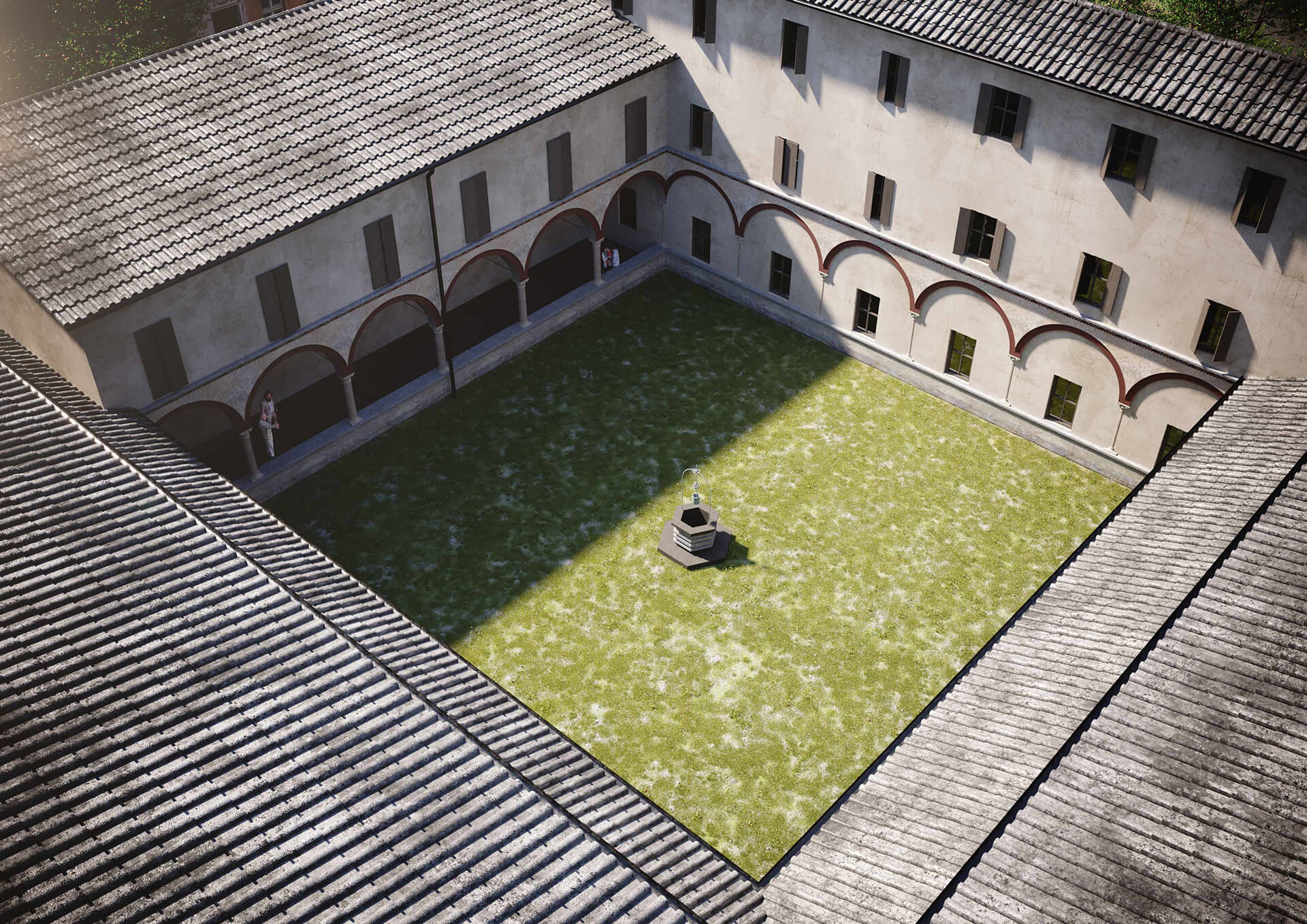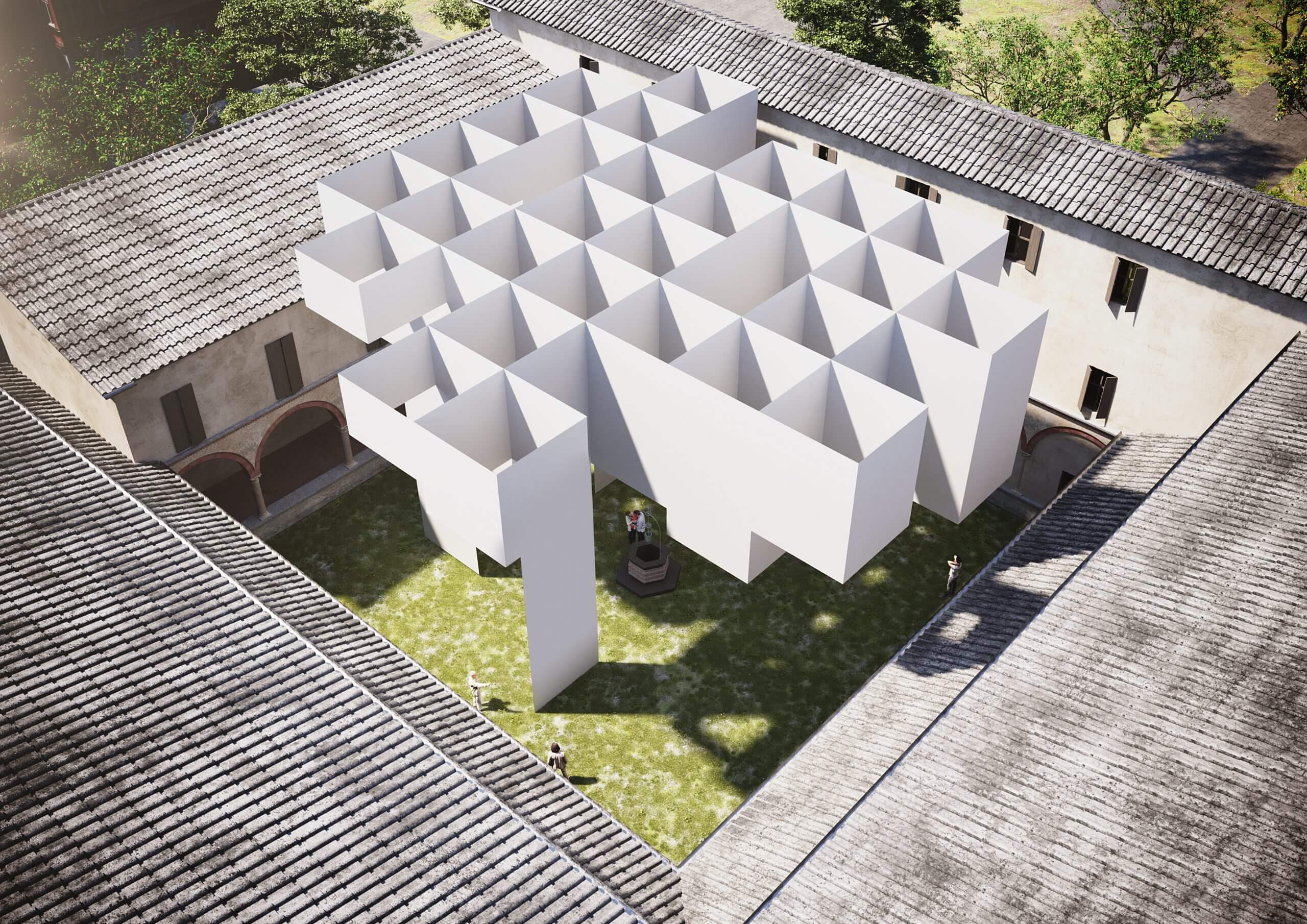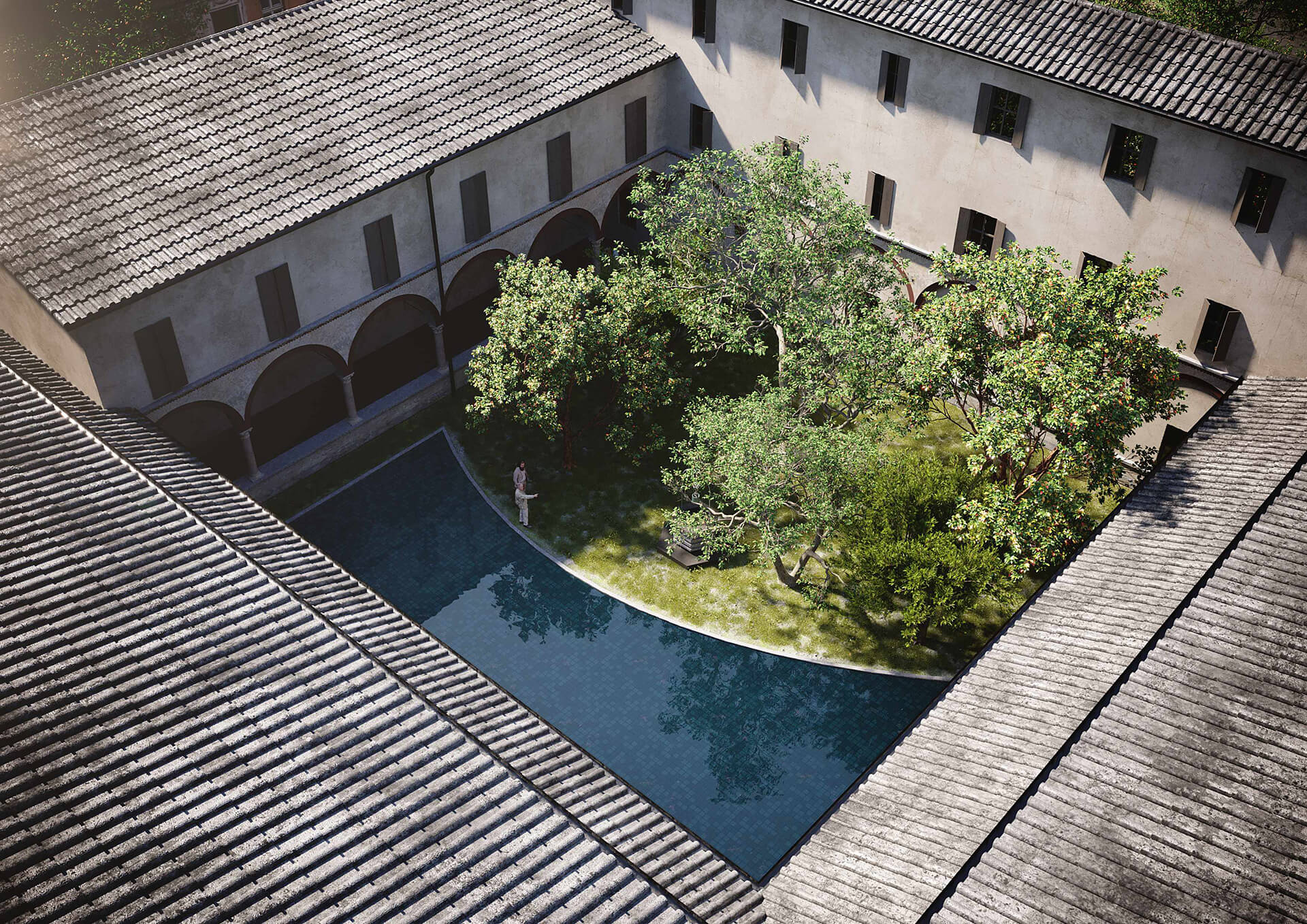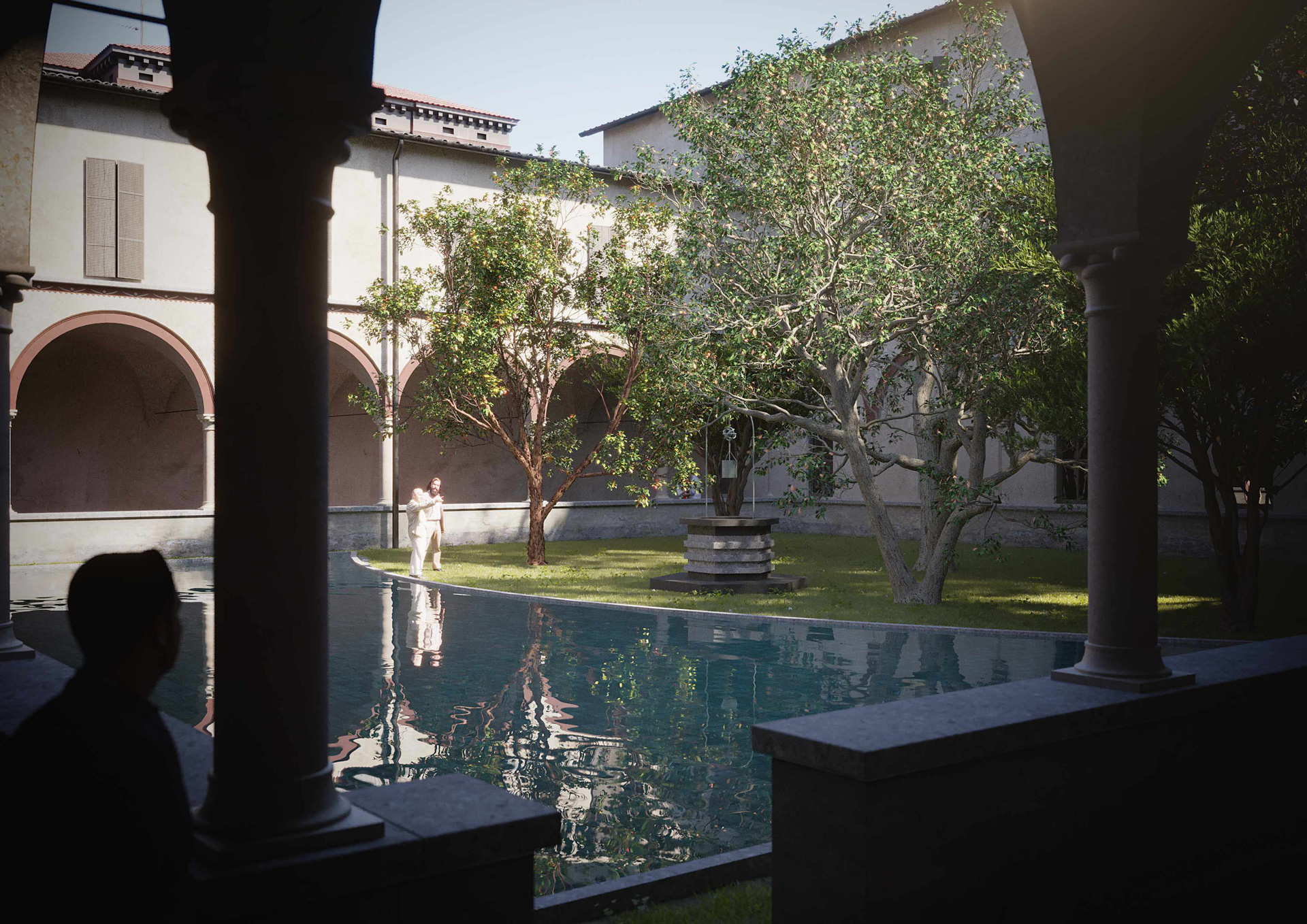Courtyards, Italy
Professor Naboni and his colleagues at University of Parma and Tal Tech, examine how courtyards are threatened by climate change, and how strategies of shading, vegetation and cross ventilation are securing local quality.

Why Parma?
Parma, as many cities in the Mediterranean context, is a city characterised by a big number of courtyards, known for being thermally pleasant and rich in vegetation. But Urban Heat Islands and climate change modified their microclimate, which has affected their capacity of supporting biodiversity, and the energy load of adjacent spaces are on a sensible rise often with AC units further emitting heat on the courtyards.

With more than half of the world population living in cities and climate change intensifying during the last decades, the need to address increasing average temperatures and frequent heatwaves in urban environments is more relevant than ever. The challenge is greater for historical cities, where architectural mitigation and adaptation measures need to be foreseen in accordance with conservation regulations.
This computational study, based on the ENVI-met software tool, attempts to make a first step towards understanding the thermal resilience of a courtyard located in Parma in 2080 and to test three biomimicry approaches for the mitigation of climate related challenges in courtyards. These are solutions applicable to other courtyards in similar climatic settings.
Results
The microclimatic simulations show that the courtyard comfort is and will be further compromised due to increased direct solar radiation, lack of ventilation and high air temperatures. The results show that algorythmically optimized simple, shading interventions, that are open to ventilation flows, can locally counteract climate change reducing sensibly the perceived temperature.

The simulations also show that adding trees and water are not the most effective solutions: The overall view of all the strategies compared with the basic configuration shows that shading is the most effective solution. It blocks the direct radiation but at the same time leaves the possibility to see the sky. The UTCI is reduced by up to 2°C in comparison with the basic configuration in the entire surface of the court.

Interesting results are coming also from ventilation proposal, in the part shown at point 3 of fig. 43, where the UTCI drops up to 5°C from the basic configuration. The effect of water and vegetation is the less effective solution due to one main reason: the floor in the courtyard is also covered with grass. But the shading effect of the trees gives some benefit, as it is shown in point 1 of fig. 47, where UTCI drops by up to 1°C.
Shading strategy seems to be the best performing solution in terms of climate change mitigation. This solution is inspired by the biomimicry strategy of cacti, which have adapted to an extreme heat climate. The shading through vertical structures has proved effective both for the protection from the sun’s rays
and for the non-obstruction of the vertical ventilation of the cloister.
